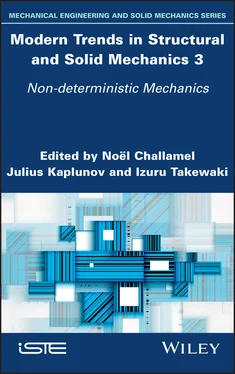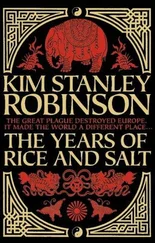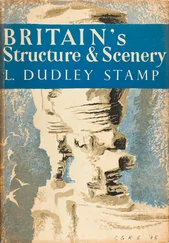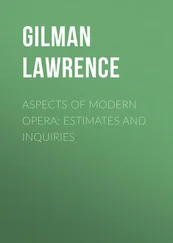It is a pleasure to thank the editors of this volume for their effort in organizing the authors and chapters, and for considering a chapter on a topic that may be considered outside the mainstream focus of this book, as well as the very useful feedback on the first draft of this chapter.
This volume acknowledges the professional life and accomplishments of Isaac Elishakoff. I knew of his work before I met him in 1982, when I gave a talk at the Technion, in Haifa, where Isaac was a faculty member. He was very kind to a novice; at the time I worked for a consulting engineering firm in New York. It would be another seven years before I would join Rutgers University. But during that consulting period, I continued my friendship with Isaac, and we and two additional colleagues published a paper on the use of MACSYMA, one of the early symbolic codes, in problems of random vibration.
Isaac and I continued our near-periodic interactions, randomly exchanging ideas and holiday greetings. He eventually came to Florida Atlantic University, not missing a beat in his extraordinary productivity. He writes books as others write papers. His interest in mechanics goes beyond the technical aspects, intersecting with the historical provenance of the fundamental ideas that shape our disciplines. His works continue to add insights and dimension to our understanding of complex physical processes.
While my professional interests very much overlap with Isaac’s, I have recently become interested in the biological sciences, in particular, brain energetics, and whether we can apply some of our engineering and mathematical modeling skills to the fantastic and very complex processes, by which the cells in our bodies create energy. I am pleased to honor Isaac by presenting a summary of some interesting aspects of the functioning of the mitochondria, an organelle that exists in large numbers in most of our cells. It creates the energy that our bodies require in order to live, survive and think. This community has much to offer in helping to increase our understanding of these beyond-complicated processes. I am sure that Isaac would agree.
Congratulations Isaac, for what you have achieved so far, and for what you will continue to contribute!
Adiele, R.C. and Adiele, C.A. (2019). Metabolic defects in multiple sclerosis. Mitochondrion , 44, 7–14.
Baker, N., Patel, J., Khacho, M. (2019). Linking mitochondrial dynamics, cristae remodeling and supercomplex formation: How mitochondrial structure can regulate bioenergetics. Mitochondrion , 49, 259–268.
Beard, D.A. (2005). A biophysical model of the mitochondrial respiratory system and oxidative phosphorylation. PLoS Comput. Biol ., 1(4), 252–264.
Benard, G., Bellance, N., James, D., Parrone, P., Fernandez, H., Letellier, T., Rossignol, R. (2007). Mitochondrial bioenergetics and structural network organization. J. Cell Sci ., 120(5), 838–848.
Benaroya, H. (2020). Brain energetics, mitochondria, and traumatic brain injury. Rev. Neurosci . [Online]. Available at: https://doi.org/10.1515/revneuro-2019-0086.
Bertram, R., Pedersen, M.G., Luciani, D.S., Sherman, A. (2006). A simplified model for mitochondrial ATP production. J. Theor. Biol ., 243, 575–586.
Buhlman, L.M. (2016). Mitochondrial Mechanisms of Degeneration and Repair in Parkinson’s Disease . Springer Nature, Cham, Switzerland.
Castora, F.J. (2019). Mitochondrial function and abnormalities implicated in the pathogenesis of ASD. Prog. Neuropsychopharmacol. Biol. Psychiatry , 92, 83–108.
Chan, F., Lax, N.Z., Voss, C.M., Aldana, B.I., Whyte, S., Jenkins, A., Nicholson, C., Nichols, S., Tilley, E., Powell, Z., Waagepetersen, H.S., Davies, C.H., Turnbull, D.M., Cunningham, M.O. (2019). The role of astrocytes in seizure generation: Insights from a novel in vitro seizure model based on mitochondrial dysfunction. Brain , 142, 391–411.
Chauhan, A., Vera, J., Wolkenhauer, O. (2014). The systems biology of mitochondrial fission and fusion and implications for disease and aging. Biogerontology , 15, 1–12.
Chen, Y., Meyer, J.N., Hill, H.Z., Lange, G., Condon, M.R., Klein, J.C., Ndirangul, D., Falvo, M.J. (2017). Role of mitochondrial DNA damage and dysfunction on veterans with Gulf War Illness. PLoS One , 12(9), e0184832.
Correia, S.C. and Moreira, P.I. (2018). Role of mitochondria in neurodegenerative diseases: The dark side of the “energy factory”. In Mitochondrial Biology and Experimental Therapeutics , Oliviera, P.J. (ed.). Springer Nature, Cham, Switzerland.
Diogo, C.V., Yambire, K.F., Mosquera, L.F., Branco, T., Raimundo, N. (2018). Mitochondrial adventures at the organelle society. Biochem. Biophys. Res. Commun ., 500, 87–93.
Eisner, V., Picard, M., Hajnóczky, G. (2018). Mitochondrial dynamics in adaptive and maladaptive cellular stress responses. Nat. Cell Biol ., 20, 755–765.
Elfawy, H.A. and Das, B. (2019). Crosstalk between mitochondrial dysfunction, oxidative stress, and age related neurodegenerative disease: Etiologies and therapeutic strategies. Life Sci ., 218, 165–184.
Elishakoff, I. and Zingales, M. (2003). Contrasting probabilistic and anti-optimization approaches in an applied mechanics problem. Int. J. Solids Struct ., 40, 4281–4297.
Elishakoff, I., Haftka, R.T., Fang, J. (1994). Structural design under bounded uncertainty – Optimization with anti-optimization. Comp. Struct ., 53(6), 1401–1405.
Feng, Q. and Kornmann, B. (2018). Mechanical forces on cellular organelles. J. Cell Sci ., 131, 1–9.
Ghochani, M., Nulton, J.D., Salamon, P., Frey, T.G., Rabinovitch, A., Baljon, A.R.C. (2010). Tensile forces and shape entropy explain observed crista structure in mitochondria. Biophys. J ., 99, 3244–3254.
Giorgi, C., De Stefani, D., Bononi, A., Rizzuto, R., Pinton, P. (2009). Structural and functional link between the mitochondrial networks and the endoplasmic reticulum. Int. J. Biochem. Cell Biol ., 41(10), 1817–1827.
Kembro, J.M., Aon, M.A., Winslow, R.L., O’Rourke, B., Cortassa, S. (2013). Integrating mitochondrial energetics, Redox and ROS metabolic networks: A two-compartment model. Biophys. J ., 104, 332–343.
Koslik, H.J., Hamilton, G., Golomb, B.A. (2014). Mitochondrial dysfunction in Gulf War Illness revealed by 31Phosphorus magnetic resonance spectroscopy: A case-control study. PLoS One , 9(3), e92887.
Kurt, B. and Topal, T. (2013). Mitochondrial disease. Dis. Mol. Med ., 1(1), 11–14.
Lackner, L.L. (2014). Shaping the dynamic mitochondrial network. BMC Biol ., 12, 35.
Lemonde, H. and Rahman, S. (2014). Inherited mitochondrial disease. Pediatr . Child Health , 25(3), 133–138.
Lim, C.T., Zhou, E.H., Quek, S.T. (2006). Mechanical models for living cells – A review. J. Biomech ., 39, 195–216.
Mannella, C.A., Lederer, W.J., Jafri, M.S. (2013). The connection between inner membrane topology and mitochondrial function. J. Mol. Cell Cardiol ., 62, 51–57.
Marchi, S., Patergnani, S., Pinton, P. (2014). The endoplasmic reticulum–mitochondria connection: One touch multiple functions. Biochim. Biophys. Acta , 1837, 461–469.
Moeendarbary, E. and Harris, A.R. (2014). Cell mechanics: Principles, practices, and prospects. WIRE’s Sys. Bio. Med ., 6, 371–388.
Pagliuso, A., Cossart, P., Stavru, F. (2018). The ever-growing complexity of the mitochondrial fission machinery. Cell Mol. Life Sci ., 75, 355–374.
Читать дальше












